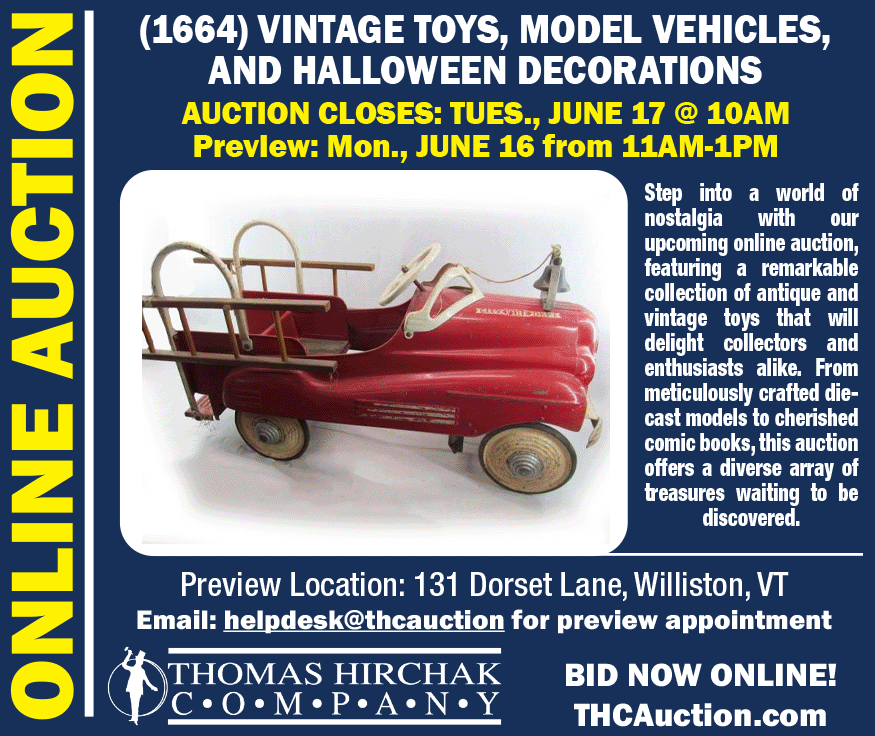Freeman's Americana Auction
November 13th, 2013
|
This 7" high carved and painted Hopi kachina figure, 19th century, from a Haverford, Pennsylvania, estate sold on the Internet for $6400 (est. $500/800).
This Coasting Bank is a rare painted cast-iron and lead mechanical bank, marked “Coasting Bank” on the red-painted openwork base. It is thought to have been designed by Charles A. Bailey for J. & E. Stevens Co., Cromwell, Connecticut, circa 1884. It sold for $266,500 (est. $30,000/50,000) to a prominent Pennsylvania collector in the salesroom. This bank had eluded collectors since 1955 when an 1884 advertisement for it appeared in Hobbies magazine.
This 48¾" high Queen Anne mahogany wing chair from 18th-century Boston sold for $10,000 (est. $3000/5000).
This painted William and Mary tavern table, 18th century, 25½" x 32½" x 22", sold for $6875 (est. $600/800).
Two phone bidders battled for this Federal child’s upholstered mahogany easy chair. The circa 1800 New England chair with arched back with outset wings and scrolled arms on square tapering legs is 29½" high and sold for $6875 (est. $1000/1500).
This 100" x 117" appliquéd and autographed album quilt, dated 1847, descended in the Mitchell, Hooper, Stump, and Magraw family of Cecil County, Maryland. It sold on the phone for $12,500 (est. $4000/6000).
This diminutive (4½" high) silver teapot by John McMullin (1765-1843) has a squat circular form on a square base. The body is engraved with a wreath, a scalloped band at its shoulder, and a later monogram. Weighing 7¾ troy ounces, the teapot sold on the phone for $2625 (est. $300/500).
This 27" x 27" x 18" tray-top mahogany tea table, New England, 18th century, sold on the phone for $12,500 (est. $3000/5000). |
Freeman’s, Philadelphia, Pennsylvania
Photos courtesy Freeman’s
The only known example of the Coasting Bank, a cast-iron and lead American mechanical bank, sold at Freeman’s in Philadelphia on November 13, 2013, for $266,500 (includes buyer’s premium). The buyer in the salesroom was a prominent Pennsylvania collector but would not reveal his name. Underbidders were on the phones. Freeman’s estimated the bank at $30,000/50,000.
Bank collectors had been looking for this bank since 1955 when F.H. Griffith, a mechanical bank collector and sometime dealer, found an illustrated advertisement for it in the 1884 winter edition of Ehrichs’ Fashion Quarterly. Griffith wrote a regular column about banks for Hobbies magazine, and in the April 1955 issue he presented his finding. (He also wrote books on mechanical banks.) Griffith suggested that the Coasting Bank was produced by J. & E. Stevens Co. and was probably designed by Charles A. Bailey (1848-1926), who worked for Stevens from the 1880’s until he went out on his own in 1915.The bank is strikingly similar to the Shoot the Chute bank, designed and patented by Charles Bailey in 1906. Moreover, several other banks in the Ehrichs’ Fashion Quarterly advertisement were designed by Bailey, and the Coasting baby is made of a zinc and lead alloy that Bailey often used. No patent papers for this Coasting Bank have been found. The April 1955 Hobbies magazinearticle further suggested that the ad proved the Coasting Bank was once actually on the market and for sale to the public (for 95¢ in 1884). Coasting Bank became the Holy Grail for bank collections.
“A Great Bank…But Where Is It?” asked Al Davidson nearly at the end of his book Penny Lane: A History of Antique Mechanical Toy Banks (1987). The answer turned out to be—in Scotland.
The Coasting Bank that sold at Freeman’s was found in Peebles, Scotland, by a woman clearing out her mother-in-law’s attic. She brought it to a filming of a BBC Antiques Roadshow in Scotland, where Jon Baddeley, an expert on such items for the Roadshow, told her it was worth at least £25,000/35,000 and, with more research, perhaps £100,000.
How did it get to Philadelphia for sale? “The Antiques Roadshow has a strict rule that the person who identifies an object cannot solicit it for sale,” said Lynda Cain, head of Americana at Freeman’s. The owner of the bank, who lives in Scotland, took it to Lyon & Turnbull in Edinburgh, which has a marketing alliance with Freeman’s in Philadelphia. “We often work together to offer consignments in Philadelphia or in Scotland in the best interests of our clients,” said Paul Roberts, who is based in Edinburgh with Lyon & Turnbull and is Freeman’s president. Roberts came to Philadelphia for the sale.
The bank is in the form of a lead baby with outstretched arms sitting on a sled with a slot for the coin between its legs. The sled was placed at the top of the painted steel hill, and it was activated by pulling a string (now missing). The sled quickly ended its descent and the coin was deposited in a lead triangular receptacle painted green with yellow scrolling flowers. The baby lands on its head. On the red-painted openwork base, the name “Coasting Bank” is embossed on the central strip.
When Lynda Cain took the bank to meetings of the Mechanical Bank Collectors of America, a nonprofit organization, it caused much excitement. Even though she was told the bank could bring between $250,000 and $350,000, she did not change the estimate of $30,000/50,000. The $266,500 is not a record. The record for an American mechanical bank stands at $426,000 for an Old Woman in a Shoe bank, paid at Bertoia Auctions in Vineland, New Jersey, at a sale of the Stanley Sax collection in May 1998. (At that same sale a Darky and Watermelon bank sold for $354,500 and a Freedman’s bank brought $321,500.)
The Coasting Bank became the top lot at Freeman’s fall gallery auction of American decorative arts, which was followed by the annual Pennsylvania sale on November 14. Both sales were offered in one catalog. On Wednesday 374 lots were offered, and 310 sold for a total of $1,078,814 (right in the middle of presale estimates), buoyed by the $266,500 paid for the Coasting Bank. The sale was 83% sold. The Pennsylvania sale, always a favorite with locals, brought another $450,057—below the expectations of $508,070/810,880. Just 187 of the 240 lots sold for a 78% sold rate. For the two days, the total was $1,528,871.
There were a few strong prices and some bargains. Any excuse about condition was reason not to bid. Big furniture was a bargain. For instance, a New England cherrywood desk-and-bookcase sold for $5625; a small Pennsylvania walnut schrank with inlaid date 1795 and with inlaid initials sold for $15,000; and there were no bids for a two-piece 18th-century architectural pine corner cupboard with raised panel doors. A walnut side chair from the Paschall and Morris family sold for $1875. A figured mahogany dish-top Philadelphia tea table, circa 1760, sold for $12,500. In January 2000 at Sotheby’s, this table had sold for $40,250. It seemed as though 2013 was a great time to buy furniture. The few pieces of New England furniture that sold over estimates, such as a tray-top tea table at $12,500 and a balloon-seat Boston mahogany side chair at $4375, seemed like good values.
Three couples came to the sale and bought multiple pieces. Dealers who had exhibited at the Delaware show came to preview and may have been bidding on the phones. The Pennsylvania trade was active.
A Baltimore album quilt sold for $12,500. A group of six transfer-printed enameled cloak pins went for $9375. Chinese export porcelain sold within and above estimates. A large (9" tall) jug with a flag-bearing clipper ship and with a gilt and red eagle under its spout sold to collectors in the salesroom for $2625. They said they got a bargain. A Confederate canteen, 1861-65, sold for $2750. Several pieces of southern silver sold over estimates. Freeman’s has an office in Charlottesville, Virginia.
A cherrywood music stand by Wharton Esherick sold for $25,000. Comparing hammer prices, this one at $20,000 was just $1000 more than a similar stand by Esherick that sold at Keno’s auction in October 2013. American studio furniture is in demand now, and an edition of only 24 (in addition to the original made for a friend) of these graceful music stands was made.
A well-documented collection of American Indian material came from the estate of Dr. Luther R. and Frances T. Zehner of Meadville, Pennsylvania. Early in his career Luther Zehner (1923-2013) spent a year practicing medicine at Standing Rock Reservation near Fort Yates, North Dakota, while his wife taught school there. They formed a deep, lasting bond with the Lakota Sioux. He learned their language, and the Zehners were adopted by the tribal community in July 1950. The material they collected was well received. A Montana dealer came to the sale and battled phone bidders and bidders on line and went home with multiple purchases.
Pennsylvania books, maps, and manuscripts were offered at the end of the sale and have a local following. As usual, Clarence Wolf of G.S. MacManus Company, Bryn Mawr, Pennsylvania, was the major buyer or underbidder.
For more information, contact Freeman’s at (215) 563-9275 or via the Web site (www.freemansauction.com).
|
|
|
|
|
|
|
|
Originally published in the February 2014 issue of Maine Antique Digest. © 2014 Maine Antique Digest
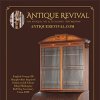




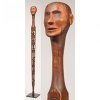











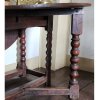



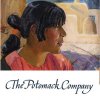
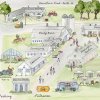

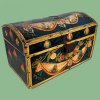
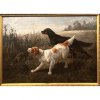



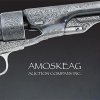
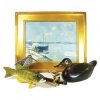


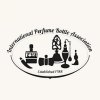
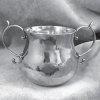




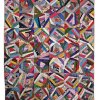

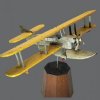








 This 32" high Moorish Revival mantel clock, late 19th century, is similar to a clock marked on both the face and movement “Tiffany & Co.” This one is not marked Tiffany and has a different dome and spire from the known Tiffany clock. It sold on line for $5120 (est. $1000/1500).
This 32" high Moorish Revival mantel clock, late 19th century, is similar to a clock marked on both the face and movement “Tiffany & Co.” This one is not marked Tiffany and has a different dome and spire from the known Tiffany clock. It sold on line for $5120 (est. $1000/1500). A lot of two business directories, an 1838 Philadelphia directory and an 1850-51 Pennsylvania one, sold to Clarence Wolf of G.S. MacManus Company, Bryn Mawr, Pennsylvania, for $813 (est. $250/400). The 1838 volume had a listing for “T. William Freeman, No 9 South Third St. Auctioneer for the sale of Real Estate, ships, stocks, furniture, horses carriages etc, appraisement made for executors, administrators, assignees and advances made in anticipation of sales at a moment’s notice.” This was the predecessor of Freeman’s, which boasts a Freeman auctioneer continuously since 1805.
A lot of two business directories, an 1838 Philadelphia directory and an 1850-51 Pennsylvania one, sold to Clarence Wolf of G.S. MacManus Company, Bryn Mawr, Pennsylvania, for $813 (est. $250/400). The 1838 volume had a listing for “T. William Freeman, No 9 South Third St. Auctioneer for the sale of Real Estate, ships, stocks, furniture, horses carriages etc, appraisement made for executors, administrators, assignees and advances made in anticipation of sales at a moment’s notice.” This was the predecessor of Freeman’s, which boasts a Freeman auctioneer continuously since 1805. This brass surveyor’s compass by Edward Duffield (1720-1801) is marked “Edward Duffield, Philada” and is fitted in its original wood case with brass brackets. The 13½" long compass sold in the salesroom to Downingtown, Pennslyvania, dealer Philip Bradley for $10,625 (est. $3000/5000).
This brass surveyor’s compass by Edward Duffield (1720-1801) is marked “Edward Duffield, Philada” and is fitted in its original wood case with brass brackets. The 13½" long compass sold in the salesroom to Downingtown, Pennslyvania, dealer Philip Bradley for $10,625 (est. $3000/5000). This manuscript archive has 23 of the 24 original ransom letters written by the kidnappers of Charley Ross. He was taken from his front lawn in Philadelphia. The letters date from July 3 through November 26, 1874, and sold on the phone for $20,000 (est. $3000/5000). This kidnapping took place in Germantown, and the letters document what is considered the first kidnapping for ransom in the U.S. that received widespread media attention. It was notable for having occurred in one of America’s first middle-class bedroom communities. Charley, a four-year-old boy, was never found. The lot of letters and the following lot (a poster offering $20,000 reward for Charley’s return) were bought by a supporter of Historic Germantown and will be put on deposit at the Germantown Historical Society and shown to the public in a special exhibition, according to Laura Keim, director of Historic Germantown.
This manuscript archive has 23 of the 24 original ransom letters written by the kidnappers of Charley Ross. He was taken from his front lawn in Philadelphia. The letters date from July 3 through November 26, 1874, and sold on the phone for $20,000 (est. $3000/5000). This kidnapping took place in Germantown, and the letters document what is considered the first kidnapping for ransom in the U.S. that received widespread media attention. It was notable for having occurred in one of America’s first middle-class bedroom communities. Charley, a four-year-old boy, was never found. The lot of letters and the following lot (a poster offering $20,000 reward for Charley’s return) were bought by a supporter of Historic Germantown and will be put on deposit at the Germantown Historical Society and shown to the public in a special exhibition, according to Laura Keim, director of Historic Germantown.

